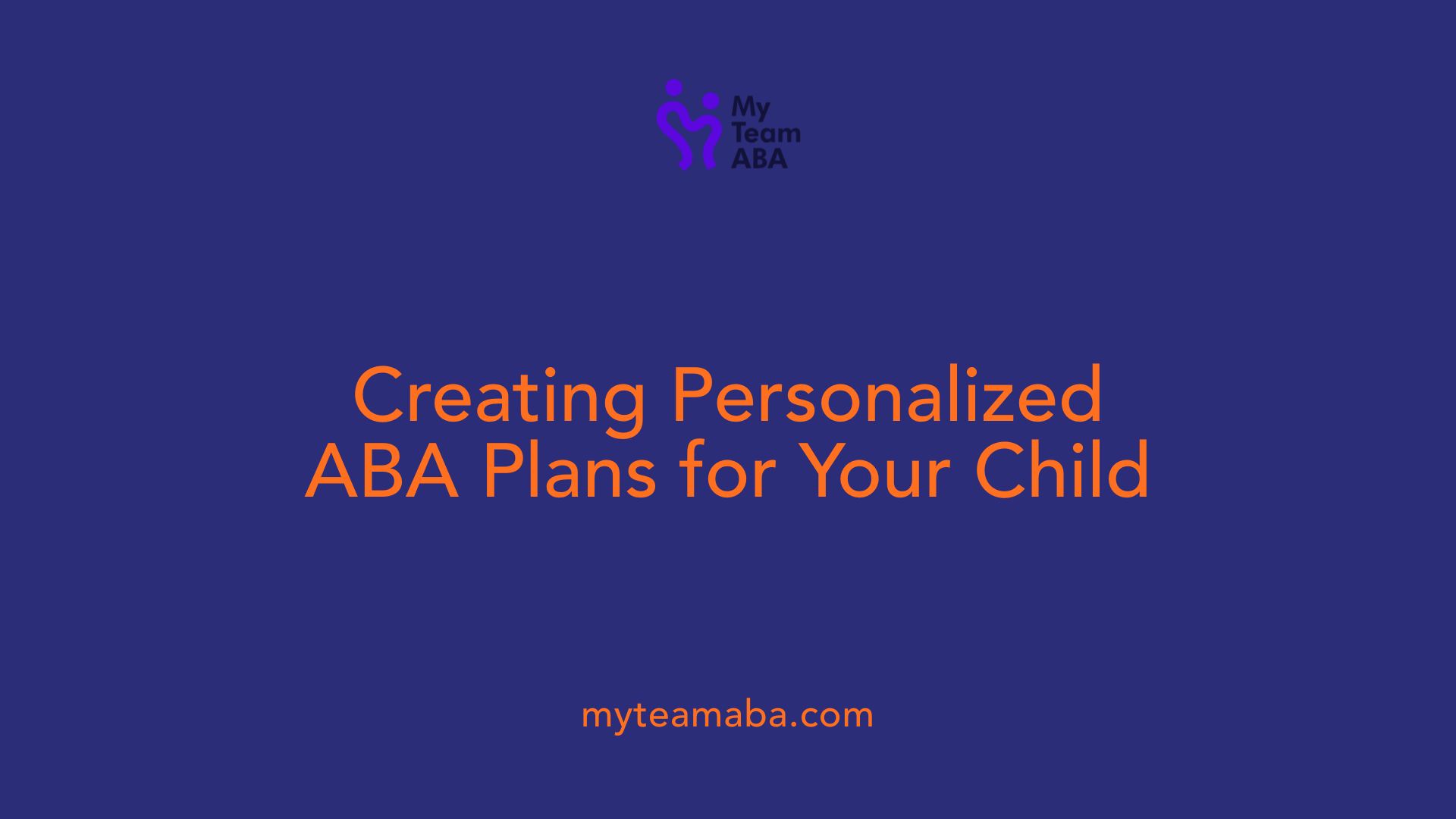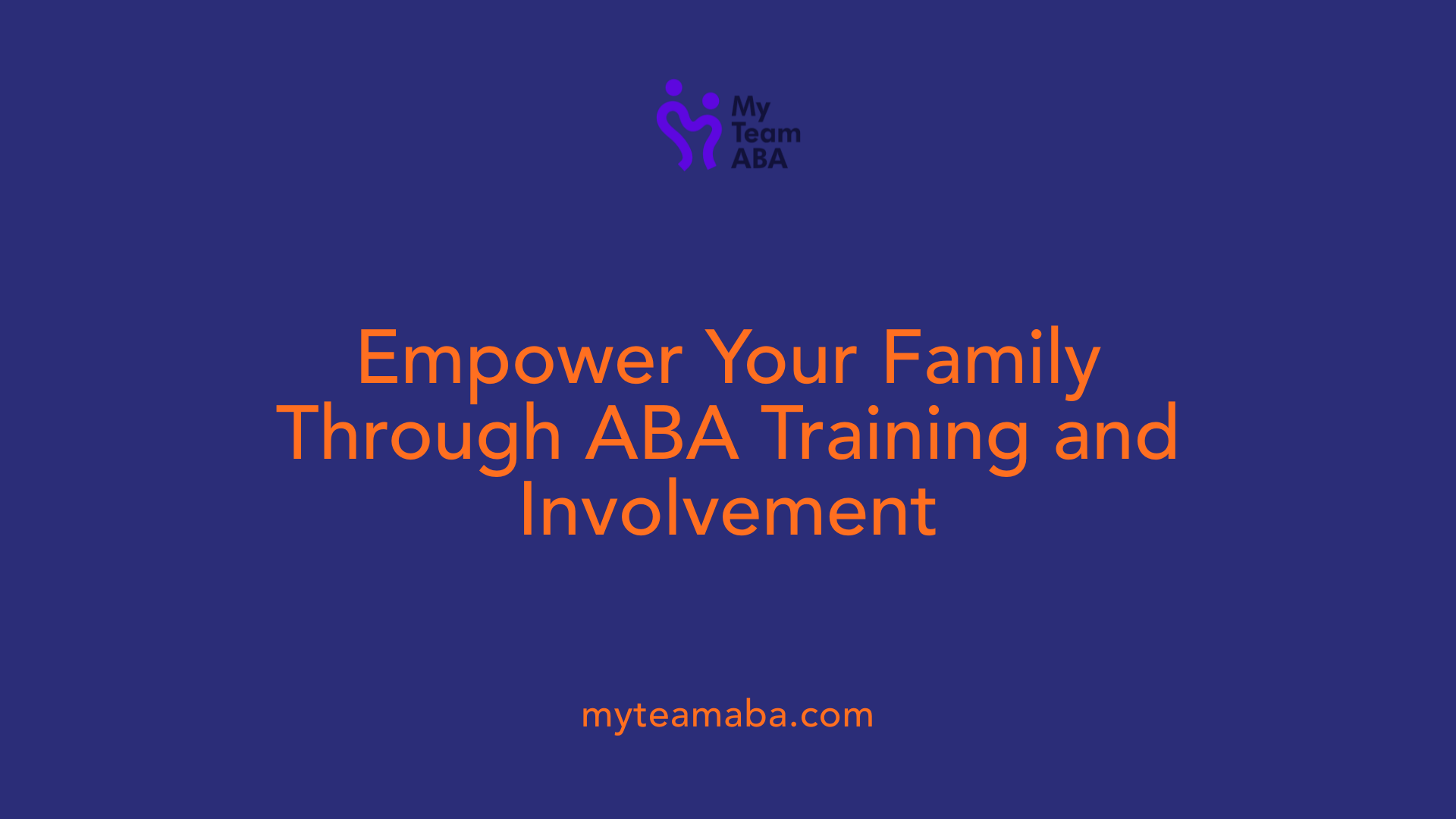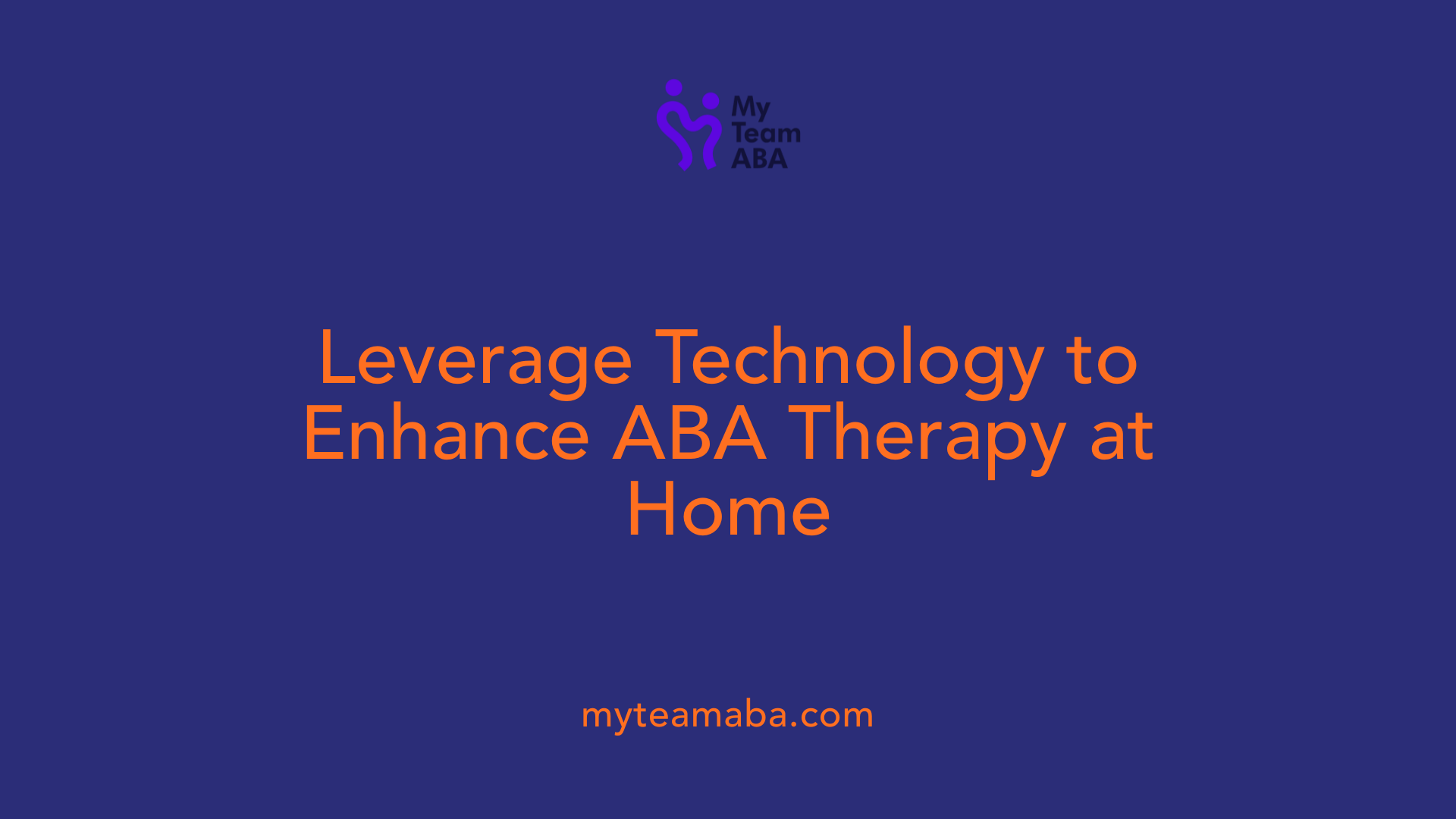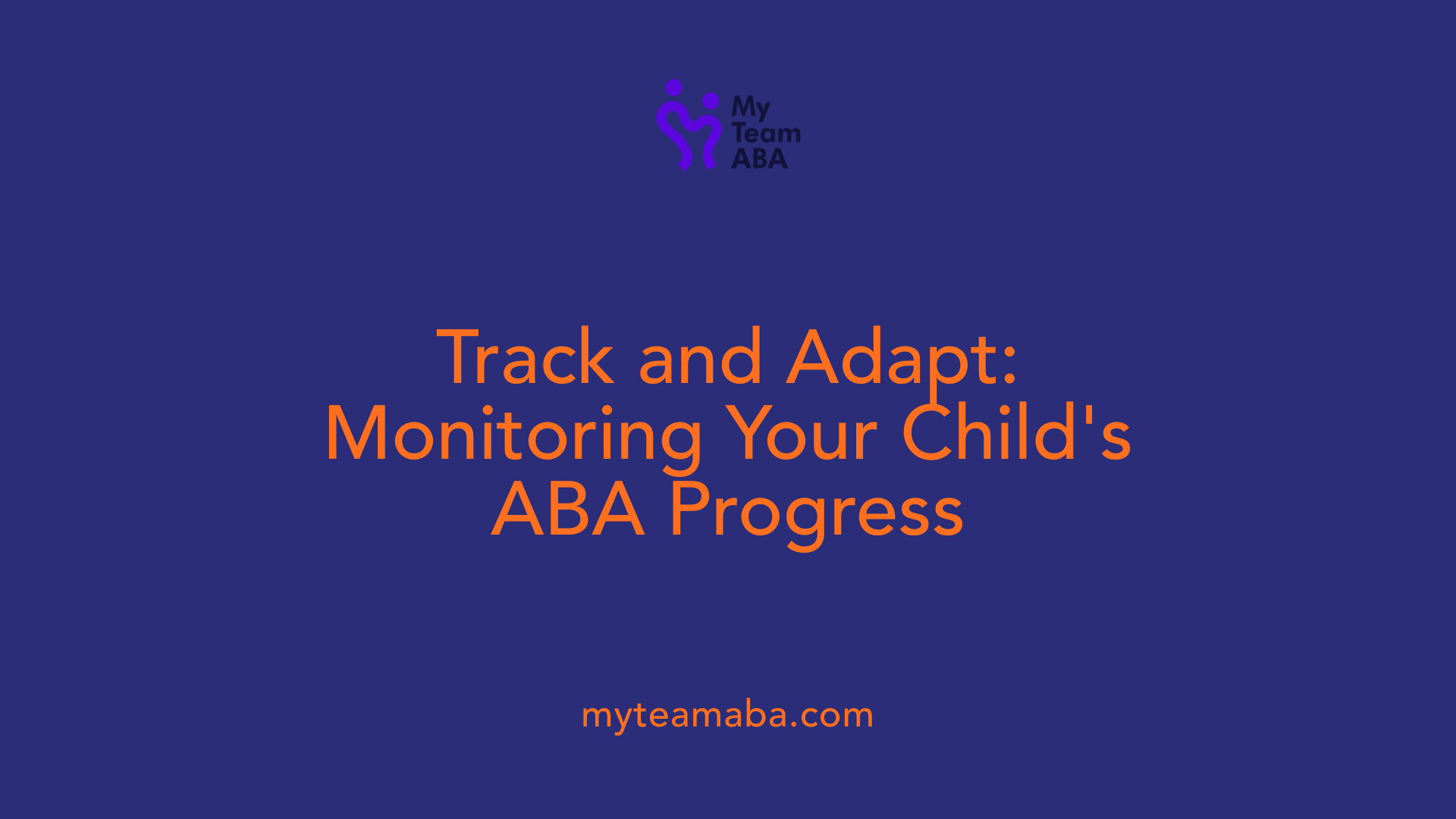Designing an Effective Home-Based ABA Therapy Plan
April 30, 2025
Maximizing Progress with a Tailored Home ABA Strategy

Understanding the Foundations of Home-Based ABA Therapy
Designing an effective home-based ABA therapy plan requires a comprehensive understanding of behavior analysis principles, individualized goal-setting, family engagement, and environmental adjustment. This article explores key components and strategies to develop a successful, sustainable, and personalized ABA program within the comfort of your home.
Fundamentals of ABA Therapy in the Home Setting
What is ABA therapy and its core principles?
ABA therapy, or Applied Behavior Analysis, is based on the scientific principles of behavior analysis. It involves systematic interventions that aim to encourage desirable behaviors and reduce those that interfere with learning or social interaction. A central technique used in ABA is positive reinforcement, where children receive rewards—such as praise, tokens, or activities—to strengthen positive behaviors. This approach is highly individualized, tailored to each child's unique strengths and challenges, making it particularly effective in a home environment.
What are the core components of an effective ABA plan?
An effective ABA therapy plan consists of several fundamental elements. First, set clear and measurable goals that address communication, social skills, daily living, and behavior reduction. These goals are personalized based on comprehensive assessments that include observations and standardized tests. Continuous data collection, through behavior tracking sheets or observations, helps monitor progress and inform necessary adjustments.
In addition, active family involvement is crucial. Training parents and caregivers on ABA techniques enhances consistency and helps generalize skills across settings. Regularly reviewing progress and adjusting strategies ensures the therapy remains relevant and effective as the child's needs evolve.
Implementing evidence-based interventions, such as naturalistic teaching strategies or discrete trial training, is also essential. These components work together to create a structured, yet flexible, program that supports meaningful development for children in the comfort of their home environment.
How does positive reinforcement contribute?
Positive reinforcement plays a vital role in ABA therapy, motivating children to engage in desired behaviors. Techniques like token systems, behavior charts, and social praise are used to reinforce learning and skill acquisition. When children see that positive behaviors lead to rewarding outcomes, they are more likely to repeat those behaviors, making therapy sessions engaging and productive.
By combining these core aspects—clear goals, data-driven strategies, family involvement, and reinforcement—home ABA therapy provides a comprehensive framework that promotes significant developmental progress tailored to each child's needs.
Tailoring an ABA Program to a Child's Unique Needs

How do you develop a personalized ABA therapy plan?
Creating a plan tailored to each child involves an initial assessment of their strengths, challenges, and developmental milestones through interviews, observations, and standardized assessments like ABLLS-R or VB-MAPP. These evaluations help identify specific areas to target, such as communication skills, social interactions, or daily living activities.
Once the child's individual profile is understood, therapists work closely with families to set realistic, measurable goals that align with the child's needs and family priorities. This collaborative process ensures that goals are meaningful and motivating for the child.
A personalized ABA plan incorporates evidence-based interventions such as naturalistic teaching strategies, discrete trial training, or pivotal response training, customized to the child's interests and learning style. Regular data collection helps monitor progress and allows for ongoing adjustments, ensuring the therapy remains responsive to the child's evolving needs.
What assessments are used to inform goal setting?
Effective goal setting relies on comprehensive assessments that evaluate a child's current skills and behaviors. Standardized tools like the ABLLS-R (Assessment of Basic Language and Learning Skills-Revised) and VB-MAPP (Verbal Behavior Milestones Assessment and Placement Program) are commonly used.
These assessments provide valuable data on areas such as communication, social skills, play skills, and problematic behaviors. Additionally, observations and parent interviews offer contextual insight, helping to create a well-rounded understanding of the child's abilities.
Involving family members in the assessment process ensures that goals reflect everyday situations and priorities, fostering a consistent approach across environments. The combination of standardized measures and personal input informs a targeted, effective ABA therapy plan suited to each child's unique developmental journey.
How family involvement enhances therapy success
Involving family members through training on ABA techniques is essential for maintaining consistency outside therapy sessions. When families understand the strategies, such as positive reinforcement and behavior management, they can better support skill generalization and address challenging behaviors at home.
Collaborative goal setting with families ensures that therapy goals align with their daily routines and aspirations for their child. Regular communication and feedback allow for adjustments based on family observations and experiences, making the program more adaptable.
Creating a structured, predictable home environment with visual supports and consistent routines further reinforces learning. Family engagement transforms therapy from isolated sessions into a comprehensive, daily developmental process that can significantly improve outcomes.
Designing a Consistent and Flexible Therapy Schedule

How should a therapy schedule be structured at home?
A well-designed home ABA therapy schedule balances routine with adaptability. It involves establishing regular, predictable sessions that provide stability, helping children with autism develop a sense of security and consistency. These sessions should be scheduled at times when the child is most alert and receptive, often during peak learning periods.
Integrating therapy into daily routines—such as mealtime, bath time, or play—makes learning more natural and engaging. Using visual supports like schedules and visual aids helps children understand the routine and reduces anxiety. This structure allows therapy to be both predictable and seamlessly incorporated into everyday life.
The schedule should also consider the child's individual needs and family commitments, ensuring that therapy complements rather than conflicts with other daily activities. Flexibility is a cornerstone; it allows for adjustments based on the child's progress and situational factors.
How do you handle disruptions or unexpected events?
Life is unpredictable, and disruptions are inevitable. Managing them effectively involves proactive planning and open communication. Building flexibility into the therapy schedule means having backup plans and contingency strategies ready.
Maintaining ongoing dialogue with therapists helps modify routines without losing momentum. For example, if a scheduled session must be moved or canceled, rescheduling as soon as possible and adjusting activities supports continued progress.
Good communication with all involved—family members, therapists, and caregivers—ensures everyone is informed and prepared to adapt. Using tools like shared online calendars or messaging apps can facilitate quick updates and coordination.
Overall, a flexible approach combined with proactive planning helps maintain the effectiveness of home ABA therapy amid life's inevitable surprises.
Creating a Conducive Home Environment for ABA
How can a home environment support ABA therapy?
Creating an optimum home setting for ABA therapy involves establishing an organized, dedicated space that is both comfortable and free from unnecessary distractions. This area becomes a safe haven where children can focus on learning new skills and practicing behaviors without interruptions.
Designating a specific corner or room as the therapy zone helps children associate this space with structured activities, which enhances stability and predictability. Such organization encourages engagement and makes it easier for both the child and family members to incorporate therapy routines into daily life.
What visual supports enhance learning?
Visual tools are crucial in ABA therapy at home. They include picture charts, daily schedules, step-by-step cue cards, and social stories. These aids help children understand what to expect during sessions and throughout the day, reducing anxiety and improving cooperation.
Visual supports serve to clarify expectations, motivate children, and foster independence by providing visual cues for language cues, routines, and specific skills. Using these tools consistently enhances communication and enables children to navigate daily activities with greater confidence.
Organizing the therapy space
Creating an effective therapy area involves more than just having a corner—it's about making it accessible and inviting. Keep necessary materials like visual aids, reward charts, and toys organized and within easy reach. A tidy, well-equipped space promotes focus and minimizes frustration during sessions.
Minimizing distractions for better focus
A clutter-free environment reduces sensory overwhelm and helps children concentrate on tasks. Limiting background noise, turning off electronic devices, and controlling lighting can significantly improve engagement. The goal is an environment that supports positive learning experiences.
Incorporating visual supports and tools
Employ visual supports throughout the day — in routines like mealtimes, play, or grooming. Consistent use of visual aids reinforces learning and provides predictable cues, which are especially important for children with ASD. This consistency helps reinforce skills gained during therapy and promotes generalization across settings.
| Visual Support Type | Purpose | Ideal Use Case |
|---|---|---|
| Picture charts | Clarify daily routines and tasks | Morning routines, meal prep |
| Schedules | Visual timeline of daily activities | Transition times, activity switching |
| Cue cards | Prompt specific responses | Communication, social skills |
| Behavior charts | Track behaviors and reinforce success | Behavior management |
By creating a supportive and well-organized home environment with the right visual tools, families can maximize the effectiveness of ABA therapy. This foundation helps children develop essential skills while reducing anxiety and confusion, making therapy a more engaging and productive experience.
Incorporating ABA Techniques into Daily Routines
How can caregivers implement ABA techniques during daily activities?
Caregivers play a vital role in reinforcing ABA principles at home. They can break down complex tasks into smaller, manageable steps using task analysis, making learning more accessible. Reinforcing positive behaviors immediately through praise or rewards helps encourage repetition of desired actions.
Embedding teaching moments into everyday routines—such as during mealtime, bath time, or play—ensures consistency and creates natural opportunities for skill development. This approach helps children generalize what they learn in therapy to real-life situations.
What are naturalistic teaching strategies?
Naturalistic teaching involves using children’s interests and daily activities as contexts for learning. These strategies promote engagement by aligning teaching with the child's natural routines and play.
For example, a parent might turn a simple game into a language learning opportunity by asking open-ended questions or encouraging imitation during play. This method supports skill generalization, making learning relevant and enjoyable.
Task analysis and chaining
Breaking down complex skills into small steps through task analysis makes them easier for children to learn. Chaining involves teaching each step sequentially, then linking them together to perform the entire task.
Positive reinforcement strategies
Using rewards such as tokens, praise, or preferred activities motivates children to demonstrate desirable behaviors. Consistent reinforcement helps establish pattern behaviors and encourages ongoing progress.
Naturalistic teaching methods
Incorporating activities like social games, real-life chores, or spontaneous interactions ensures therapy is engaging and meaningful. These methods help children develop practical skills that translate seamlessly into daily life.
Family Engagement and Parent Training

How can families participate in ABA therapy?
Family members, especially parents and caregivers, play a vital role in the success of home ABA therapy. They can participate actively by attending specialized training sessions where they learn ABA techniques, such as positive reinforcement strategies and behavior management techniques. Once trained, caregivers are encouraged to consistently apply these strategies across different settings, including during daily routines like mealtime, bath time, and playtime. This consistent application helps reinforce learned skills and promotes generalization.
In addition, families can incorporate engaging activities like visual aids, social skills games, or daily living challenges that align with therapy goals. Using tools such as communication boards or token systems at home can motivate children and support their progress.
Why is family involvement crucial?
The importance of family involvement in ABA therapy cannot be overstated. Active participation by caregivers ensures that techniques are consistently implemented, which enhances the effectiveness of therapy. When families are trained and involved, the child's skills are more likely to transfer from therapy sessions to everyday situations, supporting long-term success.
Moreover, family engagement fosters a collaborative environment between therapists and caregivers. Regular communication—whether through meetings, progress reports, or instant messaging—keeps everyone aligned on developmental goals and strategies. This ongoing dialogue promotes flexibility, allowing adjustments to be made as the child's needs evolve.
Together, committed family participation and professional support create a strong foundation for sustainable progress and skill mastery.
| Aspect | Role | Details |
|---|---|---|
| Family training | Learning ABA techniques | Attend workshops, practice reinforcement methods, and apply strategies consistently |
| Communication | Maintain ongoing contact | Share observations, ask questions, and update therapists regularly |
| Skill reinforcement | Practice skills outside sessions | Use everyday routines, games, and visual aids to promote learning |
In conclusion, family involvement, bolstered by ongoing training and communication, is essential for creating an effective and seamless ABA therapy experience at home.
Utilizing Technology and Tools to Support ABA

What technological tools enhance ABA therapy at home?
Technology plays a vital role in supporting ABA therapy, especially within the home environment. Various apps and software are designed to facilitate accurate data collection, enabling therapists and families to monitor progress efficiently. For instance, data collection apps streamline recording behaviors and responses during therapy sessions, ensuring information is precise and easily accessible.
Telehealth platforms have expanded access to qualified ABA therapists, allowing for remote consultations, therapy planning, and coaching. This means families can receive professional guidance without the need for frequent in-person visits.
Interactive tools and virtual environments are also used to make therapy sessions more engaging. These digital resources help children practice social skills, communication, and daily living activities in simulated but realistic settings.
How does technology improve therapy outcomes?
The integration of technology enhances the effectiveness of ABA therapy by providing real-time feedback. Therapists and families can adjust intervention strategies promptly based on immediate data insights.
Easier data recording and sharing facilitate ongoing collaboration between therapists and families, ensuring that therapy plans remain aligned with the child's evolving needs.
Remote monitoring tools enable therapists to observe and support children outside of scheduled sessions, reinforcing learning and consistency.
In summary, tools such as data apps, telehealth options, and virtual environments not only make therapy more accessible but also promote more individualized, responsive, and engaging interventions, ultimately improving outcomes for children receiving ABA therapy at home.
Monitoring Progress and Adjusting Strategies

How is progress monitored in home ABA?
Progress in home ABA therapy is carefully tracked using various data collection methods. Therapists and families utilize behavior charts, detailed observations, and standardized assessment tools to monitor the child's responses and development. These methods provide empirical evidence of progress and help identify areas that need further support.
Regular reviews of this data ensure that the therapy remains aligned with the child's evolving needs. These assessments often include noting improvements in communication, social skills, and daily living activities, as well as reductions in challenging behaviors. Consistent monitoring supports making timely adjustments to the therapy plan.
How are strategies adjusted over time?
Based on the ongoing data and assessments, therapy strategies are regularly revised to better suit the child's growth. If a particular approach isn’t yielding the expected results, therapists and families collaborate to modify techniques or introduce new activities.
Celebrating milestones is an essential part of this process, providing motivation for the child and reassurance for the family. As children reach new skills, goals are updated and new challenges set to promote continued advancement. Flexibility and regular communication ensure that the therapy remains effective and tailored to the child's changing needs.
Efficient monitoring and adaptation are critical for maximizing the benefits of ABA therapy. Adjustments based on solid data help create a responsive and supportive learning environment, fostering steady progress in every child's development.
Promoting Generalization and Independence
How do you ensure skill generalization?
Ensuring that children can transfer learned skills across different settings is a core goal of ABA therapy. This is achieved by engaging children in real-world activities that are relevant to their daily lives. Therapy sessions often include practicing skills in natural environments, such as at home, in community centers, or during outings. Involving peers and family members during these activities helps children see the practical application of skills.
Furthermore, therapists gradually introduce variations in routines and environments to reinforce learning and promote adaptability. This systematic approach ensures that skills are not limited to a specific context but become part of the child's everyday interactions.
Why is promoting independence important?
Fostering independence is crucial because it supports children’s ability to manage daily tasks confidently and autonomously. Encouraging independence helps develop practical life skills such as dressing, feeding, and communicating effectively. It also boosts a child's confidence and motivation, which are vital for continued learning and social engagement.
In the long term, promoting independence lays a foundation for social participation and success in various settings. It empowers children to navigate their environments with less reliance on direct support, opening up opportunities for greater personal growth and inclusion in community activities.
Strategies to Enhance Generalization and Independence
| Strategy | Description | Benefit |
|---|---|---|
| Real-world practice | Incorporate skill training in natural settings like park visits or grocery shopping | Skills become relevant and applicable |
| Peer involvement | Include siblings or peers in activities to model and practice skills | Increases social interaction |
| Environment variation | Use different locations, scenarios, and times of day during training | Builds adaptability |
| Family training | Educate family members to reinforce skills daily | Ensures consistency |
| Visual supports and routines | Employ visual schedules and prompts for independence | Reduces anxiety, boosts confidence |
By systematically applying these approaches, ABA therapy not only teaches new skills but also ensures children can use them across various settings, fostering independence and a more seamless integration into everyday life.
Incorporating Visual Supports and Communication Aids
What tools support communication in ABA?
In home ABA therapy, various visual aids are used to help children better understand and express themselves. Communication boards offer a way for children to select symbols or pictures that represent words or ideas, helping improve both their expressive and receptive language skills.
Visual schedules display daily routines and activities, making transitions smoother and routines clearer. Token systems and behavior charts serve as reinforcement tools that motivate children by providing tangible rewards after reaching specific goals or displaying desired behaviors.
These tools are designed to make learning engaging and accessible, especially for children with autism who benefit from visual supports.
How do visual supports help reduce frustration?
Using visual cues helps children anticipate what will happen next, which diminishes feelings of uncertainty and anxiety. When children understand what to expect, they are less likely to feel overwhelmed or frustrated.
Visual schedules and cues also support independence by enabling children to follow routines on their own, thereby boosting confidence. Consistent use of these visual supports integrates seamlessly into daily activities like mealtime, bath time, and play, promoting smoother interactions and reducing behavioral challenges.
Effective incorporation of these tools into a structured home environment fosters a calm, predictable setting that encourages participation and learning.
| Tool | Purpose | How It Supports Children |
|---|---|---|
| Communication boards | Facilitate expressive and receptive language development | Help children signal needs and share ideas |
| Visual schedules | Clarify routines and transitions | Reduce anxiety and improve independence |
| Token systems | Reinforce good behaviors | Motivate children with tangible rewards |
| Visual aids | Support understanding of daily activities | Decrease frustration and promote engagement |
In sum, visual supports and communication aids are essential in home ABA therapy for making routines explicit, reducing stress, and fostering successful learning experiences.
Training and Collaborating with ABA Professionals
Why is professional collaboration important?
Working with qualified ABA professionals such as Board Certified Behavior Analysts (BCBAs) and Registered Behavior Technicians (RBTs) is crucial for delivering effective therapy. These experts develop personalized plans based on thorough assessments, ensuring interventions support the child's unique needs.
Collaborative efforts foster consistency across therapy sessions and home routines, which is vital for skill development and behavior change. The expertise of ABA professionals guarantees ethical practice, adherence to best standards, and targeted strategies that promote meaningful progress.
What are key considerations in professional collaboration?
Effective collaboration depends on regular communication between families and ABA practitioners. Ongoing feedback helps therapists adjust programs responsively as children grow and their needs evolve.
Adhering to ethical guidelines ensures all interventions respect the child's dignity and rights. Continuous professional training and adherence to ethical standards also help maintain a high quality of care, creating a safe and supportive environment for the child's development.
To support this collaboration, families are encouraged to stay engaged, ask questions, and share observations. This shared approach strengthens the therapy process and maximizes positive outcomes.
Additional Resources
For more information on ABA professional collaboration and ethical standards, consult reputable sources that detail guidelines and best practices in ABA therapy.
Legal and Ethical Guidelines for Home ABA Services
What legal considerations are involved in home ABA?
Delivering ABA therapy at home requires strict adherence to legal standards that safeguard the child's rights and privacy. Compliance with privacy laws like the Health Insurance Portability and Accountability Act (HIPAA) is critical in protecting personal health information. Additionally, therapists must ensure they hold appropriate licensing and certifications, such as being a Board Certified Behavior Analyst (BCBA) or having trained Registered Behavior Technicians (RBTs). Securing informed consent from parents or guardians before starting therapy ensures families are fully aware of the methods, goals, and any potential risks involved.
How do you ensure ethical practices?
Upholding ethical standards involves following all relevant state and federal regulations related to health and education services. Confidentiality must be maintained at all times, with data securely stored and shared only with authorized individuals. Clear, transparent communication with families about progress, goals, and any changes to the therapy plan fosters trust. Regular training for therapists on ethical responsibilities and ongoing supervision help maintain high-quality, accountable services.
Additional Considerations for Home ABA Settings
Implementing ABA therapy at home also involves thoughtful planning around licensing, training, and ongoing supervision. Creating an organized, safe environment and respecting family routines are essential. Moreover, using appropriate documentation and data collection ensures the therapy remains compliant with legal standards and capable of demonstrating progress.
| Aspect | Requirements | Purpose |
|---|---|---|
| Privacy Laws | HIPAA compliance, secure data handling | Protect child's personal health information |
| Licensing | Proper licenses for therapists (e.g., BCBA, RBT) | Ensure qualified service delivery |
| Family Consent | Informed consent documentation | Guarantee parental awareness and agreement |
| Ethical Standards | Confidentiality, transparency, consistent communication | Uphold professional integrity and trust |
Adhering to these guidelines not only fosters a safe, respectful environment but also enhances the effectiveness and credibility of home-based ABA therapy.
Empowering Families and Ensuring Effective Outcomes
A well-designed home-based ABA therapy plan, built on principles of consistency, family involvement, and individualized goals, can effectively support children's development. Using data-driven strategies, environmental supports, and technology enhances the therapy process and promotes meaningful progress. Ultimately, active collaboration between families and professionals fosters a nurturing environment that fosters independence, confidence, and lifelong skills for children with autism spectrum disorder.
References
- Mastering Home-Based ABA Therapy Scheduling Strategies
- Effective Scheduling Strategies for Home-Based ABA Therapy
- Creating an ABA Therapy Plan Tailored for Your Child
- Incorporating ABA Therapy Activities into Daily Routines at Home
- Part 9: Importance of Family Involvement in ABA Therapy
- The Role of Family in ABA Therapy: Tips for Parents
- Enhance Family Life with ABA Therapy Services
- The Role of Caregiver Involvement in ABA Therapy
